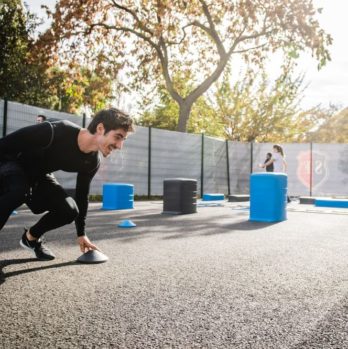Bouldering A Comprehensive Guide to the Sport

Bouldering: An In-depth Exploration of the Sport
Introduction:

Bouldering is a popular form of rock climbing that has gained significant traction in recent years. With its physical challenges and mental puzzles, bouldering offers a unique experience for climbers of all skill levels. In this article, we will delve into the world of bouldering, providing an overview, exploring its various types, discussing quantitative measurements, differentiating between styles, and examining its historical pros and cons.
I. An Overview of Bouldering
Bouldering is a discipline of rock climbing that focuses on short climbs, typically less than 20 feet, without the use of ropes or harnesses. The climbs, known as problems, are usually performed on large boulders or artificial walls equipped with grips. Bouldering emphasizes technique, strength, and problem-solving abilities, making it an exciting and dynamic sport enjoyed by many.
II. Types of Bouldering
1. Outdoor Bouldering:
Outdoor bouldering takes place in natural settings, such as forests, canyons, or mountains. It allows climbers to connect with nature and experience the thrill of conquering real rock formations. Famous outdoor bouldering locations include Fontainebleau in France, Joe’s Valley in the United States, and Rocklands in South Africa.
2. Indoor Bouldering:
Indoor bouldering takes place in specialized climbing gyms equipped with artificial walls and a variety of routes or problems. This type of bouldering offers year-round accessibility, controlled environments, and a community atmosphere that encourages climbers to connect and improve together. Many climbing gyms also host competitions and events to promote the sport.
III. Quantitative Measurements in Bouldering
In bouldering, various measurements are used to evaluate the difficulty of a climb or problem. The two most commonly used grading systems are the V-scale and the Fontainebleau grading system. The V-scale, commonly used in the United States, rates the difficulty from V0 (easiest) to V17 (hardest). The Fontainebleau system, used mainly in Europe, utilizes a more complex system based on adjectives such as ”f6a” or ”7b+”. These ratings help climbers gauge their progress and guide them as they challenge themselves on increasingly difficult problems.
IV. Differentiating Styles in Bouldering
Bouldering encompasses a wide range of styles, each having its own unique characteristics and challenges. Some popular styles include:
1. Technical Style:
Technical bouldering focuses on intricate movements, balance, and precise footwork. Climbers must rely on their flexibility and body awareness to navigate through delicate holds and small footholds. This style requires exceptional technique and often favors climbers with a lighter build.
2. Powerful Style:
Powerful bouldering emphasizes explosive movements and strength. Climbers with a solid upper body and strong grip are better suited for this style, as it often involves dynamic moves, big reaches, and challenging overhangs. The ability to generate and control power is paramount.
3. Endurance Style:
Endurance bouldering tests a climber’s stamina by incorporating longer, sustained problems. These climbs may require multiple consecutive moves without rest, demanding both physical and mental fortitude. Endurance bouldering builds resilience and helps climbers develop the ability to execute complex sequences when fatigued.
V. Historical Pros and Cons of Bouldering
Bouldering, like any sport, has evolved over time, and with that evolution come both advantages and disadvantages. Some of the historical pros and cons of bouldering include:
Pros:
– Bouldering provides an accessible entry point to rock climbing for beginners.
– It offers a challenging full-body workout that improves strength, flexibility, and coordination.
– Bouldering allows climbers to focus on honing specific techniques and problem-solving skills.
– The social aspect of bouldering fosters a supportive and inclusive community.
Cons:
– Bouldering carries an inherent risk of injuries, such as sprains, strains, and falls.
– Outdoor bouldering can have environmental impacts on fragile ecosystems if not done responsibly.
– Equipment costs, such as climbing shoes and crash pads, can be substantial.
– The competitive nature of bouldering may put pressure on climbers, potentially leading to performance anxiety.
Conclusion:
Bouldering offers a compelling and enriching experience that combines physicality with mental challenges. Whether you prefer climbing outdoors on breathtaking rock formations or indoors in a vibrant climbing gym, bouldering caters to a wide range of interests and abilities. By understanding its various aspects, including its history, types, and different styles, climbers can fully immerse themselves in this thrilling sport. So grab your climbing shoes, chalk up your hands, and start your bouldering journey today!











